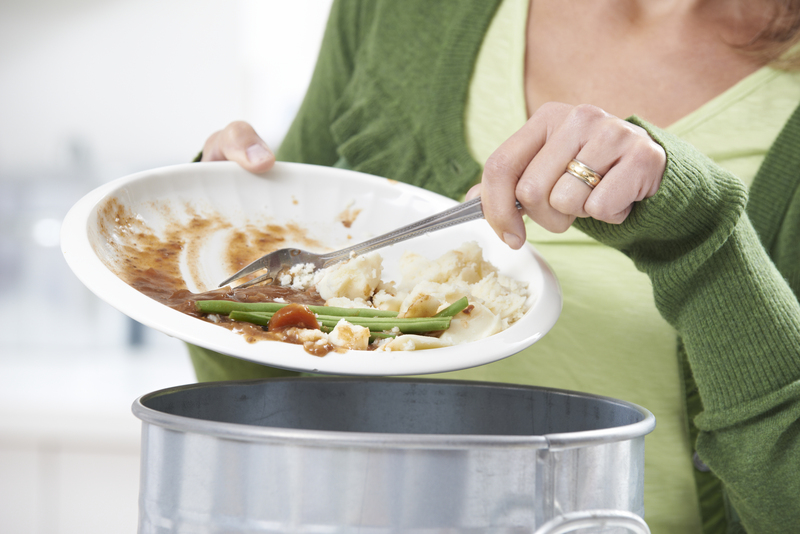Top Tips for Responsible PPE Waste Disposal in Your Community
The global demand for Personal Protective Equipment (PPE) has soared, especially in light of recent public health emergencies. While PPE--such as masks, gloves, face shields, and gowns--play an essential role in protecting individuals and communities, the surge in usage has led to a mounting problem: improper PPE waste disposal. As a result, communities face environmental, health, and logistical challenges linked to this new wave of waste.
This comprehensive guide covers top tips for safe and responsible PPE waste disposal in your community, highlights the environmental impact, and provides actionable strategies to minimize risks. Read on to discover how you can make a difference and lead change in your area.
Why Responsible PPE Waste Disposal Matters
PPE waste isn't just about aesthetics. Improper disposal of PPE can:
- Cause environmental pollution - PPE made from synthetic polymers adds to landfill bulk and can take decades to break down.
- Pose health hazards - Used masks and gloves may be contaminated, putting sanitation workers and the public at risk.
- Harm wildlife - Discarded PPE is increasingly found in waterways and green areas, where it can injure or kill birds, fish, and other animals.
Addressing PPE waste responsibly is crucial for:
- Protecting human health
- Safeguarding the environment
- Promoting community wellbeing

Understanding PPE Waste and Its Challenges
PPE includes single-use and reusable items designed to provide barrier protection. The most common types of PPE waste are:
- Face Masks (surgical and cloth masks)
- Gloves (nitrile, latex, vinyl, polyethylene)
- Face Shields
- Protective Gowns
Most single-use PPE is made from plastic polymers like polypropylene. Unlike organic waste, these materials:
- Are not biodegradable
- Are challenging to recycle through traditional methods
- May be contaminated after use, complicating disposal or recycling
The Environmental Impact of PPE Waste
The upsurge in PPE use has resulted in millions of tons of additional waste worldwide. Much of it ends up in:
- Landfills - Contributing to growing landfill pollution
- Oceans and rivers - Causing marine pollution and threatening aquatic life
- Public spaces - Deteriorating community aesthetic and creating littering issues
Studies estimate that up to 1.6 million tons of single-use plastic PPE are discarded every day globally. Managing this surge is a major challenge for urban and rural communities alike.
1. Always Use Designated PPE Disposal Containers
The Importance of Proper Segregation
Correctly disposing of PPE waste begins with proper segregation. Communities should provide and clearly label dedicated PPE waste bins in public spaces, medical facilities, schools, and workplaces.
- Separate PPE waste from regular trash and recyclables
- Use color-coded bins (often red, orange, or yellow) to facilitate easy identification
- Place bins in high-traffic areas where PPE use is prevalent
This ensures that contaminated PPE isn't mixed with household or recyclable waste, minimizing cross-contamination and streamlining the handling process for waste management professionals.
2. Follow Local PPE Waste Disposal Guidelines
Check Municipal Regulations
Disposal rules can vary depending on your location. Always consult your local council or waste management provider for specific PPE waste disposal guidelines.
- Read signage on PPE waste bins provided by your municipality
- Check for special pick-up services or scheduled drop-off points for hazardous waste
- Contact your local public health agency for updated protocols regarding PPE waste in your area
3. Do Not Litter PPE in Public Areas
Tackling the Problem at Its Source
Sadly, single-use masks and gloves have become common litter in streets, parks, and natural spaces. This is not only unsightly but also dangerous, as it can facilitate the spread of disease and harm the local environment.
- Always carry a resealable bag to safely store used PPE until it can be disposed of properly
- Encourage friends and family to do the same by raising awareness on social media and in your community
- Report frequent PPE litter spots to local authorities so extra waste bins or signage can be installed
Every responsible action reduces environmental impact and helps keep communities healthy and clean.
4. Reduce PPE Waste Through Smart Usage
Prioritize Reusable PPE Where Safe to Do So
One of the most impactful ways to manage PPE waste is to generate less of it in the first place. While single-use items are necessary in some settings, opting for reusable PPE can significantly reduce the volume of waste.
- Use reusable cloth masks when appropriate (ensure they meet health standards and are regularly washed)
- Choose washable protective gowns in non-clinical settings
- Educate community members about the benefits of switching to reusable items wherever practical
Remember: Reusable PPE should only be used when proper disinfection and handling protocols can be followed.
5. Educate and Mobilize Your Community
Community Engagement Is Key
Building a culture of responsible PPE disposal starts with education. Engage, inform, and empower your community to take action.
- Organize local awareness campaigns focusing on PPE waste dangers and sustainable disposal methods
- Host virtual town halls or webinars with local health and waste management experts
- Encourage schools and businesses to include PPE waste management in their hygiene and sustainability training
- Create and distribute digital or printed infographics outlining proper disposal procedures
A well-informed community is more likely to adopt responsible waste habits--and influence others to do the same.
6. Use Safe Handling Practices at Home
Protect Yourself and Waste Handlers
Whenever you dispose of used PPE at home, take these necessary precautions:
- Do not simply toss PPE in open bins. Instead, seal used masks, gloves, and related waste securely in a plastic bag before discarding.
- Dispose of the bag in your general waste, not your recycling bin. Most contaminated PPE is not recyclable in standard municipal programs.
- Wash your hands thoroughly for at least 20 seconds after handling used PPE.
- Keep PPE waste away from children and pets until it's collected.
Your careful practices at home make a big difference in reducing the risk for sanitation workers and preventing the spread of disease.
7. Support and Promote PPE Recycling Initiatives
Innovative Solutions for PPE Waste
While most single-use PPE is not accepted by standard recycling programs, new collection and recycling initiatives are emerging.
- Look for special PPE recycling drop-off points offered by environmental organizations or certain retailers.
- Support eco-friendly firms that turn recycled PPE into construction materials, park benches, or even new products.
- Participate in local PPE take-back events where disposable masks and gloves are collected for safe recycling or energy recovery.
Stay up to date on recycling innovations and share information with your community. Together, you can drive demand for sustainable PPE waste management solutions.
8. Advocate for Better PPE Waste Policies
Policy Plays a Big Role
Communities thrive when government, industry, and citizens work together. Advocate for clear, accessible, and effective PPE waste policies such as:
- Increasing the number of public PPE bins
- Mandating workplace PPE waste management plans
- Funding for local recycling programs
- Educational outreach on PPE hazards
Write to your local representatives, participate in community meetings, and encourage leaders to invest in sustainable solutions for PPE waste.
9. Encourage Businesses to Adopt Responsible Disposal Practices
Corporate Responsibility in PPE Waste Management
Businesses are major PPE users. Encourage local employers, stores, and organizations to adopt responsible PPE disposal practices by:
- Placing designated PPE bins at entrances and exits
- Providing clear signage and instructions for staff and customers
- Partnering with commercial waste providers for safe pickup and treatment
Leading by example helps normalize sustainable practices across your community.

10. Monitor, Measure, and Improve Community PPE Disposal Efforts
Measure Impact to Drive Change
Track your community's progress by recording PPE waste collection data, monitoring hotspots for PPE litter, and conducting regular surveys.
- Use data to identify problem areas that need more bins, signage, or education
- Celebrate improvements and share positive results with your network
- Continually refine community strategies based on feedback and new insights
Proactive monitoring ensures that your efforts remain effective and that your community becomes a model for responsible PPE waste disposal.
Conclusion: Shared Responsibility for a Safer Future
Responsible PPE waste management is a shared obligation--for individuals, families, businesses, and governments alike. By applying these top tips for effective PPE waste disposal in your community, you will reduce health risks, protect the environment, and promote a culture of sustainability.
Whether you're advocating for better policies, using reusable masks, educating others about proper disposal, or supporting new recycling initiatives, every step you take makes your community safer and cleaner.
Let's work together toward a cleaner, greener, and healthier world--one mask, one glove, and one responsible action at a time.
Further Resources on PPE Waste Disposal
Implement these strategies for safer and more sustainable PPE waste disposal in your area and inspire others to do the same.